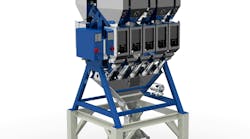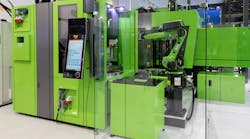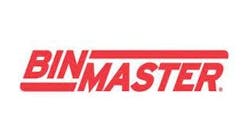Q&A with Torey McLaren, Industrial Hygiene Specialist, Risk Control, Travelers.
Q: How do high temperatures affect employees of plastics manufacturers? Are extreme weather and heat prevalent issues?
A: While heat-related illnesses are typically associated with employees who work outdoors, they can also affect those who work indoors, for example, employees at plastics manufacturing plants. Not all facilities are air-conditioned, and elevated summer temperatures, along with heat-producing equipment such as injection molders and extruders, can create dangerously hot indoor work environments.
In addition, consider elevated humidity within a building, due to those weather conditions and any moisture evaporation from an extrusion cooling bath. Increases in humidity can hinder the body’s ability to cool itself by inhibiting the evaporation of sweat. This can increase the core body temperature, potentially leading to heat-related illnesses.
Q: What dangers can high temperatures have on employees? What about the effects on equipment and machinery?
A: Working in the heat can lead to serious consequences. Common health risks associated with working in hot environments include heat rash, heat cramps, heat exhaustion and heatstroke. However, with proper planning and safety precautions, heat-related illnesses can be prevented. A free app, OSHA/NIOSH Heat Safety Tool, can be used to identify days when the heat index elevates the risk for heat stress.Equipment and machinery can also be affected by elevated temperatures.
The optimum way to determine the best, and worst, operating conditions of any piece of equipment, including the effects of high temperatures on the equipment’s ability to function optimally, is to consult with the manufacturer or refer to the operations manual.
Q: How should employers communicate those risks associated with high temperatures to employees?
A: In order to protect workers, it’s critical that each business has a written plan describing what to do when temperatures are elevated. At Travelers, we recommend that businesses educate the management team, supervisors and employees to recognize signs and symptoms of heat-related illnesses so preventative measures and appropriate action can be taken to reduce the risk.
Some symptoms to look for include dizziness, weakness, headache, blurred vision, nausea and heavy sweating. Confusion, loss of consciousness, hot and dry skin, or profuse sweating and high body temperatures can also be indicators of heatstroke, which requires immediate medical attention.
Periodic trainings and toolbox talks, which are brief safety-focused discussions at the start of a shift, can be effective methods of sharing this information with employees and to stress the importance of proactive control measures.
Q: What procedures should be put in place to help protect employees during the seasons when high temperatures occur more frequently?
A: Businesses need to have plans in place to help manage temperature extremes. Some of the procedures we recommend for high heat include:
- Acclimatizing workers over several days to help them become more resilient to heat.
- Providing workers with an adequate supply of water or sports drinks.
- Providing workers with personal protective clothing to help combat the heat, such as light-colored garments and cooling vests or headbands.
- Increasing rest periods or breaks for workers throughout the day.Rotating workers in high-exposure positions.Scheduling strenuous work for cooler periods of the day.
It’s also important to remember that heat exhaustion, if not addressed right away, can lead to heatstroke. If someone is exhibiting signs of a heat-related illness, move the worker to a room with air conditioning, and have them lie down and stay calm. They can take frequent, small sips of cool water or a sports drink. And if symptoms persist, seek medical attention.
Q: We’ve seen excessive heat across the country this summer. Do extended periods of heat pose unique risks? If so, what are those risks?
A: Without adequate hydration, extended periods of high heat can put additional stressors on the body. Proper hydration is a key element to help minimize the adverse health effects of heat and can be accomplished by drinking water or an electrolyte-replenishing drink. It is also important to recognize that diuretics, such as some medications, alcohol, caffeine and energy drinks, can adversely affect hydration since they remove water from the body.







